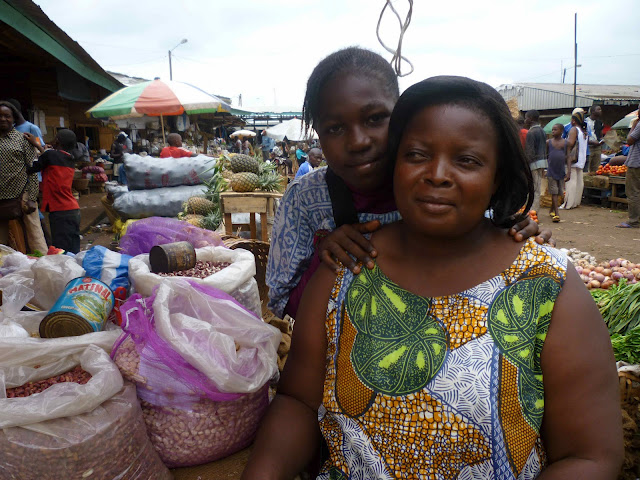-
How Maternal Mortality and Morbidity Impact Economic Development
August 11, 2010 By Calyn Ostrowski“Investing in women and girls is the right thing to do,” says Mayra Buvinic, sector director of the World Bank’s gender and development group. “It is not only fair for gender equality, but it is smart economics.” But while it may be smart economics, many developing countries fail to address the underlying social causes that impact economic growth, such as poverty and gender inequality. Buvinic was joined by Dr. Nomonde Xundu, health attaché at the Embassy of South Africa in Washington, D.C., and Mary Ellen Stanton, senior maternal health advisor at the U.S. Agency for International Development (USAID), at the sixth meeting of the Advancing Policy Dialogue on Maternal Health Series, which addressed the economic impact of maternal mortality and provided evidence for the need for increased investment in maternal health.
Evidence: Healthy Women Equal Healthy Communities
“When women have better education and health, mothers have greater household decision-making power and prioritize the well-being of their children,” said Buvinic. “In return, children have better educational attainment and are productive adults, building long-term economic growth.” Evidence demonstrates that healthy women and girls can help their families endure the global financial crisis. For example, the World Bank found that during the economic crisis, poor families who sent women to work were better able to make ends meet. “This added worker effect may be counterintuitive, but it shows the importance of ensuring economic opportunities for women,” said Buvinic.
Economic downturns also widen the disparities between rich and poor countries’ maternal mortality rates, with adolescent girls at greatest risk. Intervention programs that target young girls — such as conditional cash transfers (CCTs) that give money directly to adolescent girls — increase school retention rates and lower the risk of sexual activity, pregnancy, and HIV/AIDS.
Lessons learned from this study are important for policymakers and program managers. One lesson involved choosing the right recipients for program funds, since Buvinic pointed out it “really makes a difference” when “cash was given directly to the adolescent girls, not to their mothers.”
Closing the Gender Gap in South Africa
“Women make up 70 percent of Africa’s labor force and produce 80 percent of food; therefore, maternal deaths and disabilities are a direct cost to the economy,” said Dr. Nomonde Xundu with the South African embassy. In parts of Africa, negative social norms prevent women from accessing labor markets, confining women to unpaid household activities that constitute one-third of the world’s GDP. “Women are left with limited technical support or access to credit,” said Xundu. “We need to harness women’s entrepreneurship, both in formal and informal economies, and give women access to resources.”
In South Africa, the Accelerated and Shared Growth Initiative was created to foster development and improve the participation of marginalized people with a particular focus on women. Through this initiative, women have greater access to small business enterprises and receive support through the Small Enterprise Development Agency. According to The Global Gender Gap Report 2009, the government of South Africa is making great strides in reducing gender disparities, and has made “significant improvements in female labor participation.”
Inclusion of African women at international policy forums is imperative. “Women add value to policy development and can guide discussions [because] they know the issues,” said Xundu. Global conferences, such as the G8 and G20, have highlighted the linkages between female empowerment and maternal health. However, concluded Xundu, “African leaders need to advocate for the fulfillment of commitments made here.”
A Case for Investment in Maternal Health
Quoting the U.S. National Security Strategy, “Experience shows that countries are more peaceful and prosperous when women are accorded full and equal rights and opportunity,” said USAID’s Mary Ellen Stanton. Indeed, defense agencies, such as the Industrial College of Armed Forces, recognize that investing in maternal health builds effective relationships and demonstrates goodwill abroad. In addition to goodwill, investing in maternal health also saves money and improves productivity.
“At the household level, maternal morbidity leads to considerable loss of economic resources,” said Stanton. In Bangladesh, for example, research shows that poor households with maternal health complications spend 30 to 40 percent of their savings to cover expenses, compared to only 8 percent for the richest quintile. Meanwhile, families with an obstetric morbidity who cannot afford healthcare take out loans and cut back on meals.
As facility birth rates increase, so do cesarean births, which cost 2 to 18 times as much as vaginal birth. Consequently, “you can spend a lot of money on maternity care and not get results,” said Stanton. The World Health Organization (WHO) recommends country cesarean section rates be five to 10 percent.
“We need to invest wisely to eliminate the barriers to quality maternal care, while at the same time guard against incentivizing expensive procedures without medical indication that drive up health care costs unnecessarily and may contribute to adverse outcomes for mothers and babies,” said Stanton. She concluded that investing in “quick wins” that can be easily scaled up — such as family planning and post-abortion care — will improve maternal health and positively impact women’s productivity.
Photo Credit: “Sandga Market: Douala, Cameroon,” used courtesy of flickr user The Advocacy Project.
Topics: Africa, community-based, demography, development, Dot-Mom, economics, gender, global health, maternal health, population
 A Publication of the Stimson Center.
A Publication of the Stimson Center.







